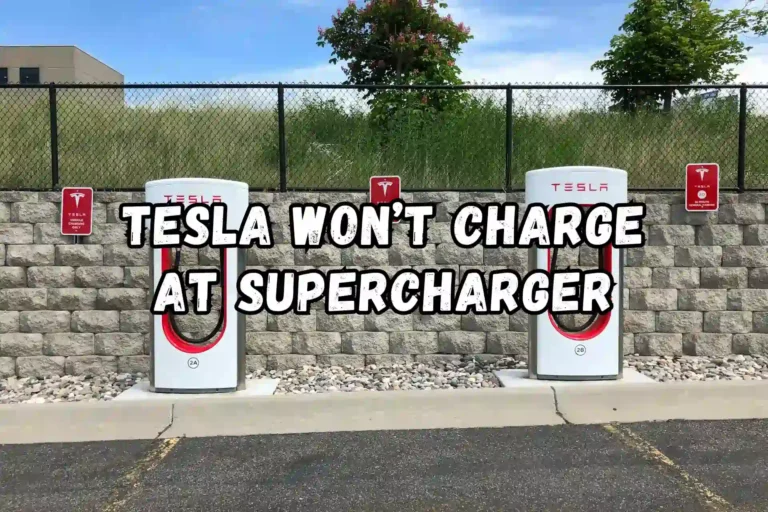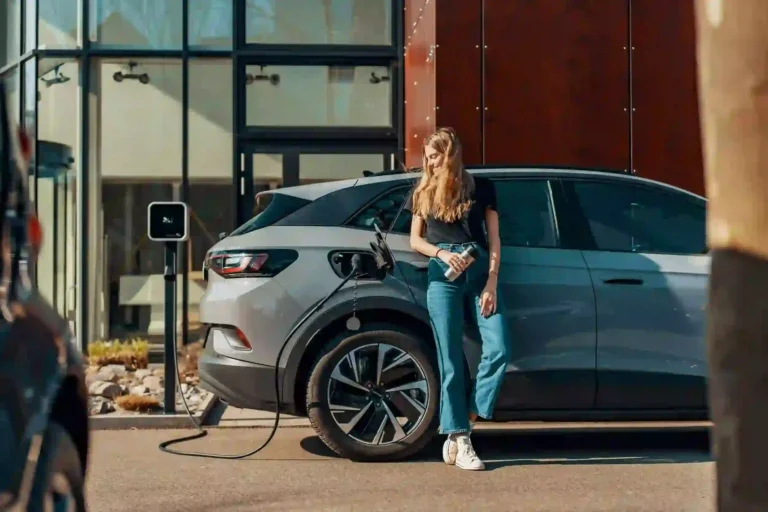When you buy an electric car, you need to know your charging options. Tesla owners have to use a proprietary plug, similar to Apple’s Lightning, unless they have an adapter (more on that later). In North America, the standard connector for electric cars is the J1772, also called the J Plug.
Here’s what you need to know about a J1772 charger(Sae Combo Charger).
About SAE J1772 charging adapters

The following two types of chargers are available to you if you decide to charge your EV at home: Level 1 and Level 2 chargers.
An electric car comes with a level 1 charger which plugs into a standard electrical outlet, has a SAE J1772 connector on one end, and has a three-prong grounded connector on the other end. A level 1 charger can provide up to 140 miles of range for 20 hours of charging.
A Level 2 charger is sold separately from the electric vehicle but is an excellent investment since it is three to seven times faster than a Level 1 charger, and it plugs into a 240V outlet so that it can charge faster.
You can install a level 2 charger in your home if you don’t mind spending a lot of money. The prevalence of public charging stations including malls, supermarkets, and offices has led to the availability of free or minimal-cost level 2 chargers.
History of J1772
EV batteries were charged using direct contact via the SAE J1772 adapter, which is also called the J Plug, for the first time. In California, it was adopted as a standard for electric vehicles by the California Air Resources Board, and the rest of North America followed suit afterward. Its ability to plug into a standard household outlet made the plug attractive to the board since it would allow EV drivers to charge in their own homes.
J1772 adapters were developed by Avcon initially, and they had rectangular connectors and could deliver up to 6.6 kW. A more powerful 19.2 kW round connector was later proposed by Yazaki Corporation, which was the predecessor to the modern J1772 connector.
Main features of J1772
AC charging is accomplished with Yazaki’s 5-pin design.
It consists of three main pins: Line 1 (L1), Neutral AC (N), and Protective Earth (PE), or Ground. Both of the smaller pins serve as a safety and communication point between the electric vehicle and the charging station, the Proximity Pilot (PP), also known as “plug present” and the Control Pilot (CP).
J-plugs that operate at 120V have a maximum operating current of 16 amps and can deliver up to 1.92 kW, while those that operate at 208V-240V have a maximum operating current of 80 amps and can deliver up to 19.2 kW.
It’s possible to expect your Plug to last 27 years if you charge once a day. The J1772 connector can last up to 10,000 mating cycles (connection and disconnection).
Different types of connectors

Level 1 chargers
Chargers with Level 1 connectors are the slowest type of electric vehicle charging connector. You can simply plug them into a
A full charge can take up to 24 hours, but overnight charging can provide 30-50 miles of range for a daily commute.
There are plenty of Level 1 chargers in residential areas. Most electric cars are already equipped with a Level 1 charger, so you don’t have to pay for one separately.
Level 2 chargers
The good news for Level 2 charging is that Level 1 chargers are available everywhere, and most electric vehicles are already equipped with one.
EV drivers usually install level 2 chargers in their homes so that they can charge faster. Level 2 chargers are found mostly in parking garages, malls, and offices.
CHAdeMO
It was named after the expression, “ocha demo ikagadesu,” which means charging is as fast as drinking tea. The CHAdeMO plug runs on direct current, not alternating current. DC charging reduces charging times significantly.
CHAdeMO is the first DC fast charging connector that is widely used, and it is still used by Nissan and Mitsubishi today. It was able to charge at 62.5 kW and was soon proposed as a standard in 2010. The Combined Charging System (CCS) connector was soon competing with CHAdeMO in 2011 as a result of developments in the US.
Sae Combo Charger (CCS)
A response to CHAdeMO DC fast charging was the SAE Combo plug, also known as the Combined Charging System (CCS). There are two types of SAE Combo/CCS connectors: Combo 1 (CCS 1) and Combo 2 (CCS 2). These connectors have two additional pins for direct current. The CCS1 connector is based on the SAE J1772 connector, while the CCS2 connector is based on a European connector, the Mennekes.
SAE J1772 charging speed

It is more common to use SAE J1772 connectors in Level 2 chargers. Although they are significantly faster than Level 1, they are not as fast as DC fast chargers.
This connector is merely a connector with the main purpose of supplying AC power to car chargers. The AC power is then converted into Direct Current, which is used to charge car batteries.
SAE J1772 connections’ charging speeds are dependent on several factors, but most importantly the outlet they are connected to:
- You can only use a 120-volt system with a NEMA 5-15 outlet to supply your car with roughly 1,44 kW of power (12 amps)
- There is a maximum power rating of 19.2 kW or 80 amps for the 240-volt system
You can get about 20-25 miles of range per hour with most Level 2 chargers with the J1772 connector. Considering that charging cycles range from 20% to up to 80-85%, charging speed is significantly slowed. For example, a 250-mile electric vehicle would take about 10 hours to fully charge.
What charging stations use a J1772?
There are no Tesla charging stations in North America that use J1772 plugs for Level 1 or Level 2. Tesla owners can use cable adapters to access charging stations nationwide, even DC fast charging stations, despite these plugs not being compatible with Tesla cars.
It is important to note that non-Tesla electric cars do not have the same privilege. They cannot be charged at Tesla Level 1, Level 2, or Level 3 charging stations as they do not feature J1772 plugs.
These charging stations are only compatible with electric cars that have a Combined Charging System connector. DC fast chargers provide extremely fast charging.
However, Elon Musk, Tesla CEO, previously announced that its Tesla Supercharger network would gradually expand to accommodate most electric cars.
Can I charge my EV with a J1772 plug at home?
Plug J1772 into your wall outlet and begin charging your electric car immediately. It is compatible with Level 1 and Level 2 home charging systems.
Frequently Asked Questions
How does the J1772 charging standard for plug-in vehicles work?
In the J1722 charging standard, there are Pilot and Proximity pins, so that the Plug for Electric Vehicle Supply Equipment (EVSE) is detected even when it is not charging. If the EVSE cannot supply enough current, the car will not be able to charge. The Pilot is used to determine the maximum current available for electric cars.
What is a J1772 charging plug?
It was the first of its kind to use direct contact when everyone else used a magnetic field to charge electric vehicles. The J1772 plug is the North American standard for charging electric vehicles. In addition to being plugged into any standard home outlet, EV drivers can charge at their convenience.
What cars use a J1772 charger?
The SAE J1772 connector is used for both Level 1 and Level 2 charging in the US and Canada, with the exception of Tesla. Despite Tesla vehicles only being able to use proprietary plugs, the market has a J1772 to Tesla adapter that allows a Tesla vehicle to charge at J1772 charging stations.
What is the J1772 adapter used for?
Electric vehicles sold in North America (except Tesla) can be charged at home, in public charging stations, or with the J1772 adapter. Level 1 charging is done using the ordinary wall outlet, while Level 2 charging is done at thousands of public charging stations across the country.
Is J1772 fast charging?
Despite being faster than Level 1, J1722 does not provide as much power as DC fast charging connectors. It can provide around 1.44kW when used in a 120V system, while 19.2kW when used in a 240V system.
What does the J1772 plug look like?
Having five different pins for AC current, signaling, and earthing, the SAE J1772 plug is circular in shape.
Is type 2 the same as J1772?
EVs in North America use the J1772 connector, which is a single-phase plug that can deliver up to 19.2kW. Type 2 refers to Mennekes connectors, which are used to charge European EVs.
Is J1772 the same as CHAdeMO?
CHAdeMO connectors are DC fast chargers developed for Direct Current instead of AC. J1772 connectors are for AC fast charging, while CHAdeMO connectors are for DC fast charging.







